André Beaudin - Composition - Original Lithograph 1964 Dimensions: 30 x 20 cm Edition of 200 (one of the 200 on Vélin de Rives) Mourlot Press, 1964 Alexander Calder (1898 - 1976) The American artist Alexander Calder was born in Philadelphia in 1898. He studies engineering from 1915 to 1919 at the Stevens Institute of Technology in Hoboken, New Jersey. He takes drawing courses with Clinton Balmer in New York in 1922, and studies at the Art Students League from 1923-25. Calder works for the magazine ''National Police Gazette'' as of 1924. For two weeks in 1925, he attends the daily show of a travelling circus in New York. In 1926 Alexander Calder moves to Paris where he studies at the Académie de la Grande Chaumière. This is where he makes first small figure of wire, wood and cloth. In spring of 1927 he sets up a complete miniature circus with these figures, and performs shows that are visited by many Parisian artists. His miniature wire figures are on exhibition in the New Yorker Weyhe Gallery in 1928. His first one-man show takes place at the Paris Galerie Billiet-Pierre Vorms in 1929. In 1930 Alexander Calder joins the artists group ''Abstraction-Création''. He increasingly deals with abstractions. A visit to the Paris observatory is a major inspiration for his first mobile and abstract wire sculptures, for which Marcel Duchamp comes up with the term ''Mobile''. Alexander Calder presents these ''Mobiles'' in the Galerie Vignon in Paris in 1932 for the first time. In these ''Mobiles'' Calder has found his very own and most appropriate form of art. The perfectly balanced constructions, moved by a touch of air, are made of metal elements, wires, threads and sticks, they become more complex and abstract over the years, however, their impression is always one of great poetry and playful airiness. In the beginning he also makes constructions that are moved by a small motor, but Calder does not pursue this type of ''Mobile''. As counterparts to the ''Mobiles'', Alexander Calder also makes immobile, tectonically heavy, partly monumental constructions of sheet metal, for which Jean Arp invents the term ''Stabile''. In 1933 Alexander Calder buys a farm house in Roxbury (Connecticut) and return to the USA with his wife Louisa James. In 1934 he creates the first open air mobile that he calls ''Steel Fish'' which is 3,5 meters tall. Besides sculptures, his oeuvre also comprises graphic art and gouaches. Additionally, he makes jewelry, stage designs and book illustrations. Alexander Calder dies in New York in 1976. His grave is in Roxbury.
André Beaudin - Komposition - Original Lithographie 1964 Abmessungen: 30 x 20 cm Auflage: 200 (eines der 200 auf Vélin de Rives) Mourlot Press, 1964 Alexander Calder (1898 - 1976) Der amerikanische Künstler Alexander Calder wird 1898 in Philadelphia geboren. Er studiert von 1915 bis 1919 Ingenieurwesen am Stevens Institute of Technology in Hoboken, New Jersey. 1922 nimmt er Zeichenkurse bei Clinton Balmer in New York und studiert von 1923-25 an der Art Students League. Ab 1924 arbeitet Calder für die Zeitschrift ''National Police Gazette''. 1925 nimmt er zwei Wochen lang an der täglichen Show eines Wanderzirkus in New York teil. 1926 zieht Alexander Calder nach Paris, wo er an der Académie de la Grande Chaumière studiert. Hier fertigt er erste kleine Figuren aus Draht, Holz und Stoff. Im Frühjahr 1927 baut er mit diesen Figuren einen kompletten Miniaturzirkus auf und führt Vorstellungen durch, die von vielen Pariser Künstlern besucht werden. Seine Miniatur-Drahtfiguren werden 1928 in der New Yorker Weyhe Gallery ausgestellt. Seine erste Einzelausstellung findet 1929 in der Pariser Galerie Billiet-Pierre Vorms statt. 1930 schließt sich Alexander Calder der Künstlergruppe ''Abstraction-Création'' an. Er beschäftigt sich zunehmend mit Abstraktionen. Ein Besuch in der Pariser Sternwarte ist eine wesentliche Inspiration für seine ersten mobilen und abstrakten Drahtskulpturen, für die Marcel Duchamp den Begriff ''Mobile'' erfindet. Alexander Calder präsentiert diese ''Mobiles'' erstmals 1932 in der Galerie Vignon in Paris. In diesen ''Mobiles'' hat Calder seine ganz eigene und angemessene Form der Kunst gefunden. Die perfekt ausbalancierten, durch einen Lufthauch bewegten Konstruktionen aus Metallelementen, Drähten, Fäden und Stöcken werden im Laufe der Jahre immer komplexer und abstrakter, wirken aber stets von großer Poesie und spielerischer Leichtigkeit. Anfangs entstehen auch Konstruktionen, die von einem kleinen Motor bewegt werden, doch Calder verfolgt diesen Typus des ''Mobile'' nicht weiter. Als Pendant zu den ''Mobiles'' fertigt Alexander Calder auch unbewegliche, tektonisch schwere, teils monumentale Konstruktionen aus Blech, für die Jean Arp den Begriff ''Stabile'' erfindet. 1933 kauft Alexander Calder ein Farmhaus in Roxbury (Connecticut) und kehrt mit seiner Frau Louisa James in die USA zurück. 1934 schafft er das erste Freiluft-Mobile, das er ''Steel Fish'' nennt und das 3,5 Meter hoch ist. Sein Oeuvre umfasst neben Skulpturen auch Grafiken und Gouachen. Außerdem fertigt er Schmuck, Bühnenbilder und Buchillustrationen an. Alexander Calder stirbt 1976 in New York. Sein Grab befindet sich in Roxbury.


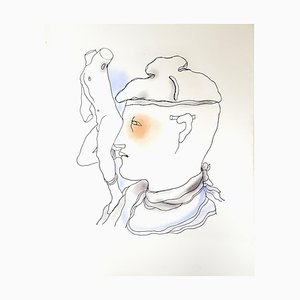
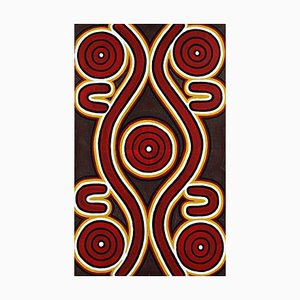

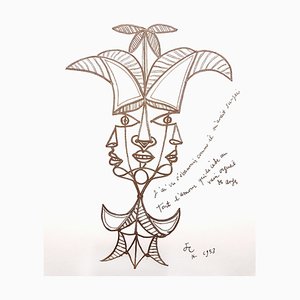
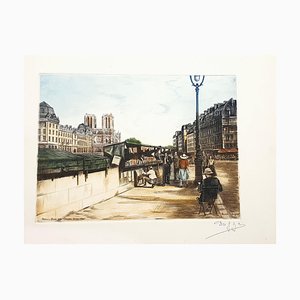
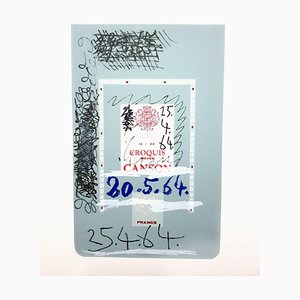
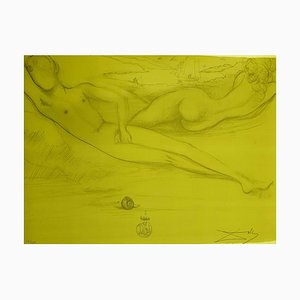

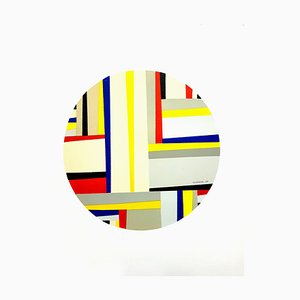
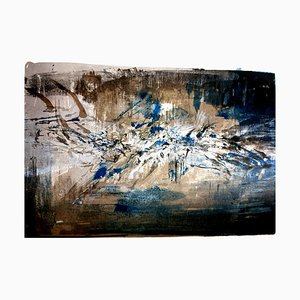




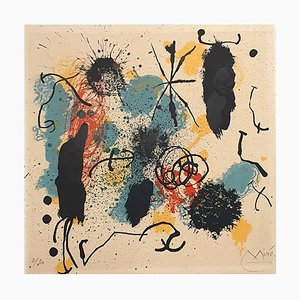
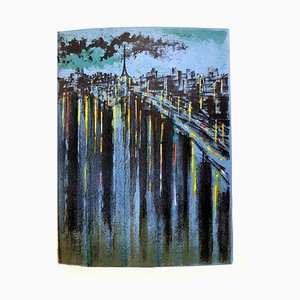
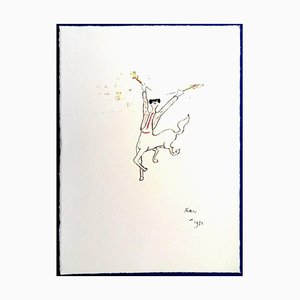

Schreiben Sie uns
Ein Angebot machen
Uns ist aufgefallen, dass Sie neu bei Pamono sind!
Bitte akzeptieren Sie die Allgemeinen Geschäftsbedingungen und die Datenschutzerklärung
Schreiben Sie uns
Ein Angebot machen
Fast geschafft!
Um die Kommunikation einsehen und verfolgen zu können, schließen Sie bitte Ihre Registrierung ab. Um mit Ihrem Angebot auf der Plattform fortzufahren, schließen Sie bitte die Registrierung ab.Erfolgreich
Vielen Dank für Ihre Anfrage! Unser Team meldet sich in Kürze bei Ihnen zurück.
Wenn Sie Architekt*in oder Inneneinrichter*in sind, bewerben Sie sich hier um dem Trage Program beizutreten.